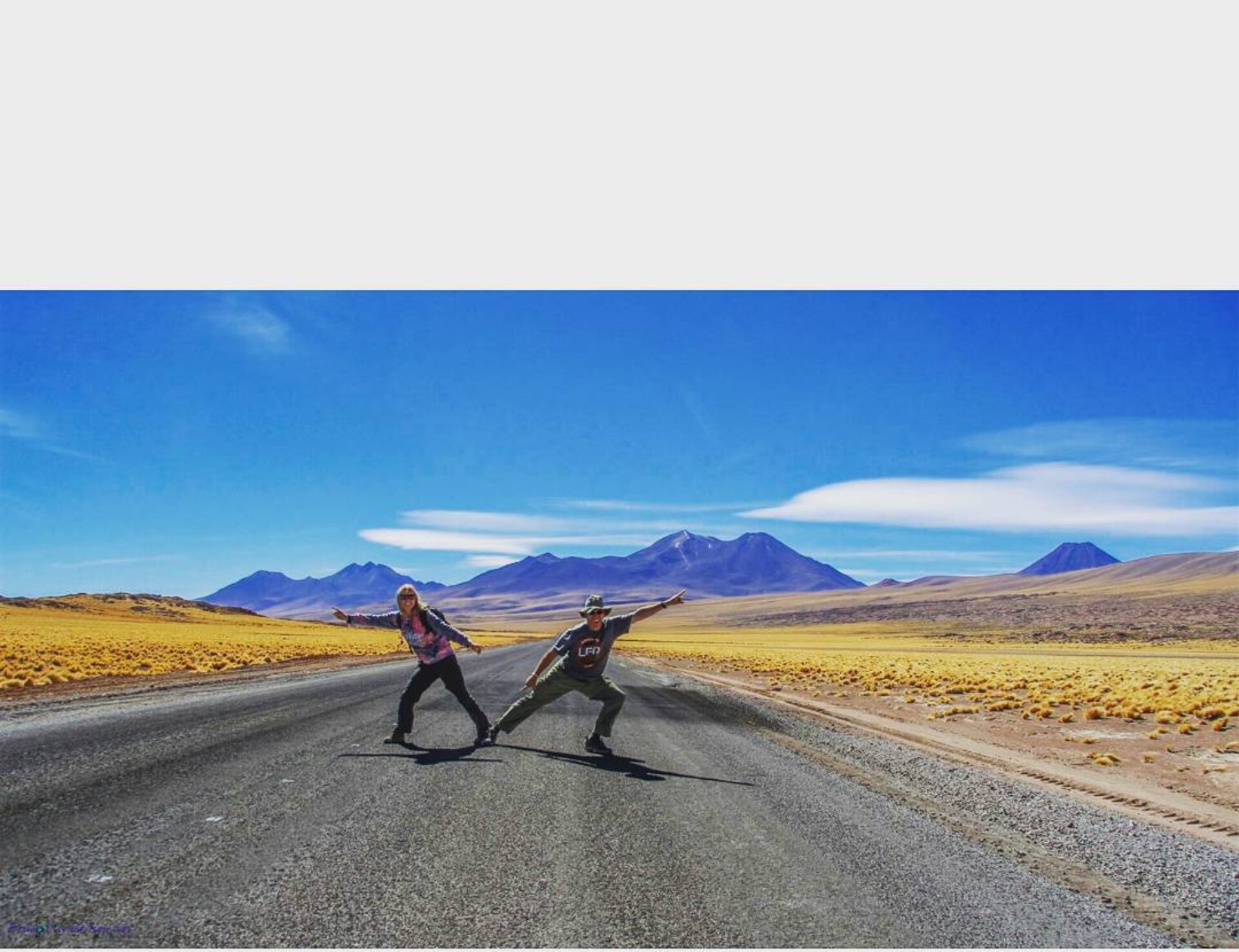Welcome to the second part of a two part feature on overlanding through Africa. In the first part of this blog I talked about “Africa Overlanding? What is it and how did we choose a company”. In this installment I will go into more detail about a typical day on an Overlanding Truck, What to expect from the experience, What to Pack and take with you and tips to make your African experience more enjoyable.
What time of year did we go?
We started the trip July 26th 2014 and finished it in early September in a very cool Cape Town! This time of year suited us because not only did it fit in with our 12 month RTW trip schedule but also it’s the dry season so less rain = less mosquitoes, heat, humidity and better wildlife viewing. It’s also a good time of year to see the Wildebeest migration in the Serengeti and Maasai Mara. If you are wanting to see this then it’s worth doing your research to find out their current location. Expert Africa provides excellent information on the Wildebeest migration patterns as well as other useful information.
Another good reason for going in the dry season is the grass on the plains is shorter providing for excellent wildlife viewing. Plus we all know it’s no fun camping in the rain! We had excellent weather for the duration of our trip, nice sunny warm days and cooler nights but all the time dry and no RAIN!
All about the truck
Meeting your truck
When you first meet your truck, you will also meet your guide and travel companions usually at a pre-departure meeting the night before. Your guide will explain the rules and what to expect and will collect your kitty money and insurance details. The next morning you will meet your truck which is where you are likely to meet more of your travel companions who boarded the truck some weeks/days earlier and are going through to the next destination. As mentioned in part one of this post, the tour is a series of small tours all joining together so you will have a change of companions on a regular basis as friends leave (and this can be sad), new ones join but some may be going all the way through to the end of the journey with you. Once you put your bag underneath the truck, your next move is to get on the truck and bag a good seat, my advice is to get close to the front! To be honest, wherever you sit on the truck it will be a bumpy ride but it’s slightly better towards the front, roads can be terrible, especially in Eastern Africa.

How many passengers on the truck?
Most trucks can hold up to 26-30 passengers but the average on our truck was around 16. Some sectors we had a full truck which meant you couldn’t jump across to a spare seat and stretch out. People are leaving and joining the truck on different sectors all the time so numbers fluctuated. So really it’s a question that can’t be answered. If your concerned about big groups then opt for a small group tour but usually these are either more expensive trips or only do the shorter legs.
The long drives ahead
Days will vary from short drives of only 3 to 4 hours to very long drives of 8 to 10 sometimes even longer if you hit problems(washouts, floods, mechanical) and traffic jams. An early start usually means a rap on your tent around 4:30 am to 5 am you will have a light breakfast, pack up your tent and be on the road by 6 am. The only time the truck will stop is for border crossings, towns to pick up supplies, lunch and toilet breaks. Toilet breaks are usually scheduled by the driver especially if he needs to go! If we really needed to go, we just pushed the buzzer and Steve would find a suitable spot to pull over. If we were out on the open road then toilet breaks are in the bush and believe me it’s bush that wants to tear your clothes off! Watch for the Acacia thorns and those Bindi seeds jabbing in your flip flops, it’s not always a pleasant experience!

While you are on the truck
Have plenty of the following:
- Snacks and drinks especially water.
- Toilet paper, hand wash/wet wipes – (Our truck did supply disinfectant but the hand sanitize gels are very handy.)
- Reading and listening material.
- Watching material. If you have a laptop/tablet then load up on movies and shows! I also passed the time away with writing my diary.
- Games, especially cards. UNO and the old backpacker favourite shithead were games of choice.
- 10 hours is a long time to be sitting on a truck staring out the window, the scenery can be like Australia, it doesn’t change much!
- Wear comfortable clothes. Mornings can be chilly so take on the truck with you something warm to wear with the view that you will be stripping off by 11 am as the hot sun comes beating through the window. I found that by wearing my loose Asian style cotton pants over my shorts was a perfect solution.
- Its also a good idea to take your pillow on-board too, there is plenty of opportunity for naps.

Lunch Stops
Lunch stops are “Let’s find a good spot to pullover, pull out the picnic tables, salads, cheeses, meats and sometimes yesterdays leftovers and build yourself a sandwich”. Sometimes you had to make your lunch that morning and eat it on the truck if there wasn’t time to stop. You may also be lucky to pass through a town where you can nip into Africa’s KFC but most of the time it was the highway picnic. If you’re lucky enough to stop close to a village then you will be guaranteed an audience of gorgeous little local children, some may even have some goodies to sell you.
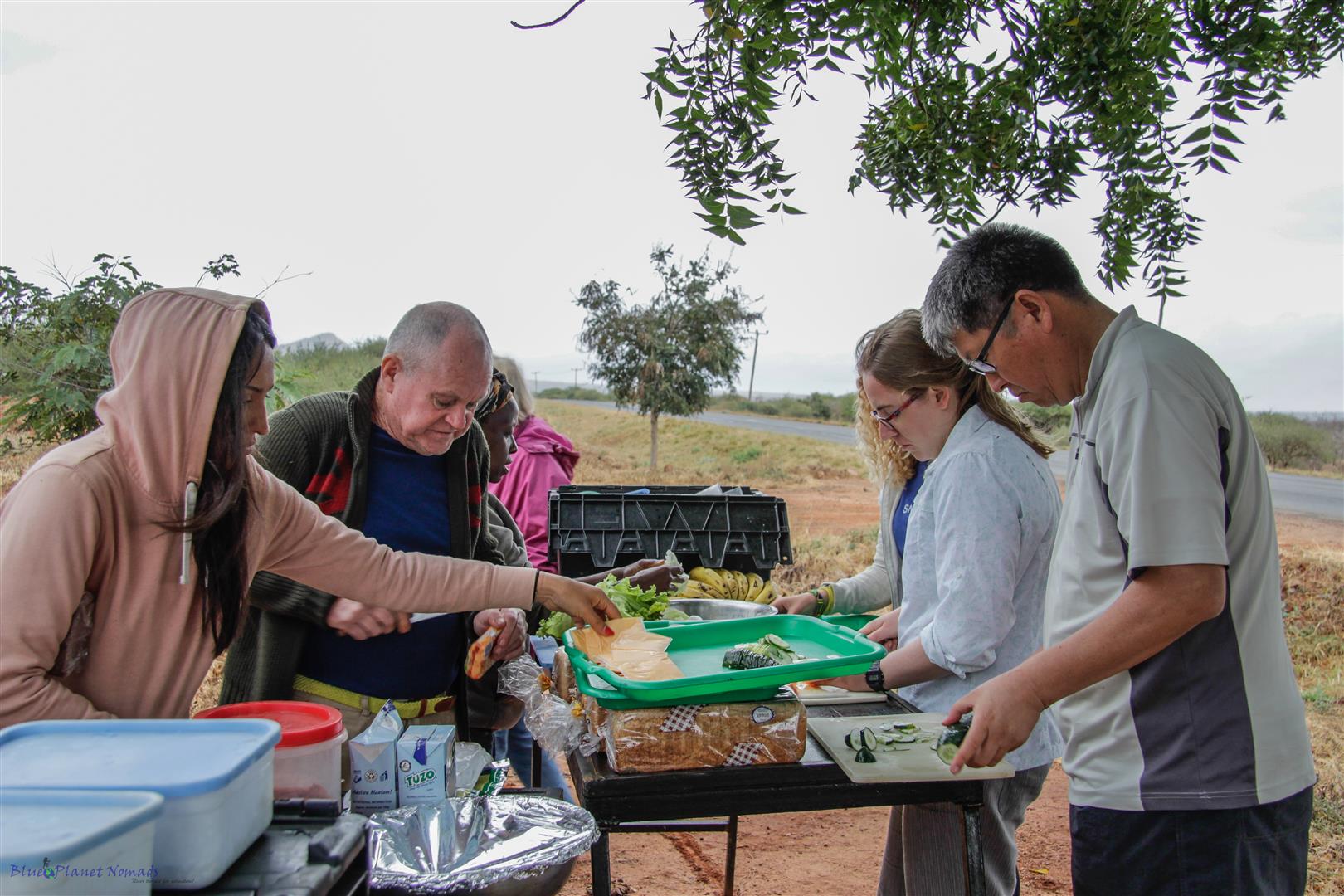
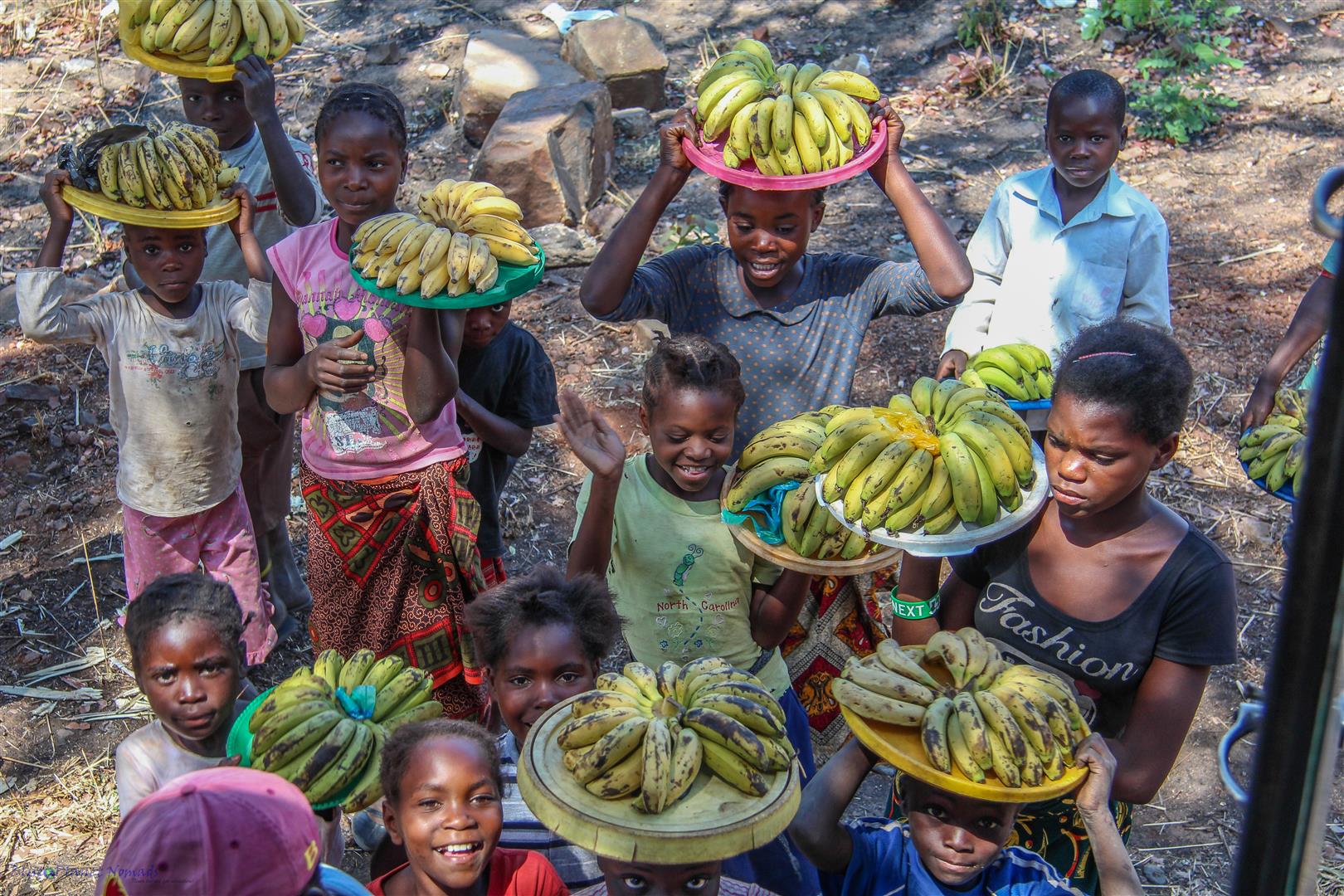
Is the truck used for game drives?
It depends on the company and even the tour, they will all have their own agenda. The only time we used the truck for a game drive was to go through Etosha National Park in Namibia and this is because we were taking the road through the park from north to south and we stayed overnight in a large fully equipped campground in the middle of the park. All other National Parks parks we used safari companies with open topped jeeps. One couple who had joined us from a previous leg told us that they had done a one day trip through the Serengeti using the truck and it wasn’t the best experience, so some legs may use the truck, it’s a question worth asking your chosen company.

Stopping in Towns
You will pass through towns on your journey and it’s a chance to stock up on supplies like drinks, snacks and toilet paper and also replenish your depleting wallet at a bank or ATM. You usually have quite a bit of free time in a town as the cook has to stock up on food supplies and the guide and driver usually has to take care of business. Our truck had a cool box on board so being in town was also a chance to stock up on alcohol (it’s cheaper than the campsite bar). Wine and beer is very cheap and the wine is good quality South African wine. Unlike Australia, where I wouldn’t dream of drinking wine out of a cask, in Africa the good stuff was sold in casks, so quite often a small group of us would buy a large cask between us to share. The further south you went the larger the bottle shops and more selection was on offer. If you love Bailey’s then give Amarula a try, it’s very delicious!

Border Crossings
Another major stop you will make every so often is to cross the borders. I’m not going to talk about visa’s requirements and cost, as this will vary with nationality. All I can say is that most nationals from UK, Europe, Australia, NZ and North America require a visa for Kenya, Tanzania, Zambia and Zimbabwe and all could be easily arranged at the border. I found Project Visa a good source of visa information requirements. We found border crossings to be relatively easy and pain free, the only one that took a long time crossing was Zimbabwe (no surprises there, is there Mr Mugabe!)
Expect the Unexpected
We had a saying among our group TIA which translated to “This is Africa” we could be humming along nicely along the highway when suddenly a not so nice corrupt policeman will pull us over and find any excuse to extract money. This did happen on one such occasion when we had only been in Tanzania for 5 minutes and we were pulled over by a drunk cop who wanted to fine Steve numerous amounts of schillings over a crack no bigger than a hair in his front headlight. Basically he wanted beer money and he wasn’t satisfied with the dollars offered to him so we had to drive all the way back to the border to get schillings. On our return he changed his mind and wanted the dollars (muppet)! Lucky enough we were not stopped too often but don’t always expect a journey to always run smoothly, many things can happen like breakdowns, road closures, bridges out, floods and the all time favourite, getting bogged, like we did in Namibia! It all adds to the experience and storytelling.

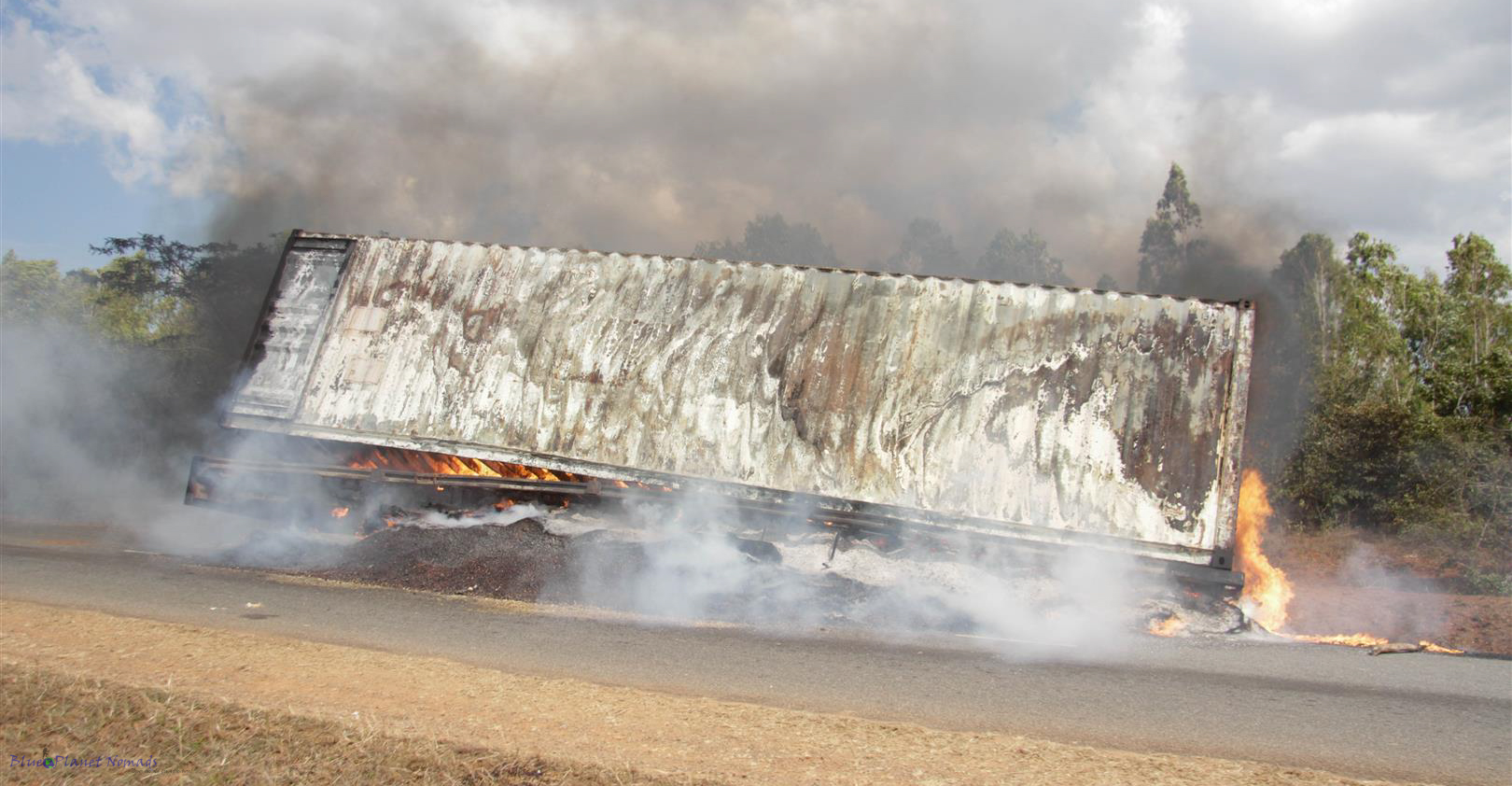
Lets talk about camping
What are the campsites like?
Camp grounds can vary from bush with no facilities (mainly on game drives), rustic with only cool running water and your flashy resort (mainly Southern Africa) with hot showers, WiFi, pool and bar. Locations also vary, you could be in the mountains one night or pitching your tent next to the warm waters of the Indian Ocean the next. My favourites were by the rivers as you can sit and listen to the hippos.



What we noticed with camp grounds was the further south you went the more available the hot water showers and it wasn’t until you got to Zambia that the first swimming pool appeared. Campsites in Kenya and Tanzania were a little more basic than their Southern counterparts, hot water showers were hit and miss and most of the time a miss with only lukewarm or cold water available. What the camp grounds did have were the most amazing bars, most are of African style with roof thatching and richly decorated with animal carvings. There is plenty of beer on tap and it’s cheap! We landed in some pretty amazing campgrounds and for most of the time we had it to ourselves. It’s only campgrounds close to the major National Parks and attractions that you will be sharing with other overland companies but it was never an issue as each truck has its own designated area. Except for bush camping, camp grounds are safe from the meat-eating wildlife, but you may get elephant, zebra and baboons wondering through, especially at night. Campgrounds by river settings will guarantee to have hippos.



Bush Camping
There were three occasions where we bush camped, the Serengeti, Chobe NP and the Okavango Delta. Bush camping has no facilities and no fences! All your camp gear is taken in by the Safari company you’re with for your short excursion and you will be right in the thick of natural beauty for one or two nights. The bush camping experience is amazing, you are right in the heart of nature, there are no showers and the toilet is usually a hole dug in the ground a little away from camp or a toilet tent hiding a dug out hole! If you have bush camped in Australia then it will be an experience not too dissimilar. After a rewarding days Safari you will arrive at your already setup bush camp to a roaring fire and your cook’s tasty dinner. There are no fences so anything can come into the camp at night so it makes a visit to the bathroom very interesting! On our Chobe NP mobile camp I lay awake listening to the sounds of roaring lions, it was a little scary but a truly magnificent experience.


How easy is it to do laundry?
Most campgrounds will have a laundry room attached or be part of the bathrooms where you can do your own laundry. Most camp grounds will have a laundry service, usually a local who will come around and collect your washing and have it back for you the same day or the next. They charge by piece or weight and they are very cheap and it comes back clean and pressed. If I did laundry then it was usually small stuff and I had with me a travel washing line which I strung between the poles of our tent.
What other accommodation options are there?
Nearly all campgrounds we visited had other accommodation options which varied from basic African style huts to more luxury abodes. If you want an upgrade and there is availability then you just pay the difference minus the cost of pitching your tent. Costs vary from an extra $10 to $50 the latter prices being more in Southern Africa. Guides will sometimes ring ahead to check on upgrade availability but it’s just as easy to go to the campground office and ask.

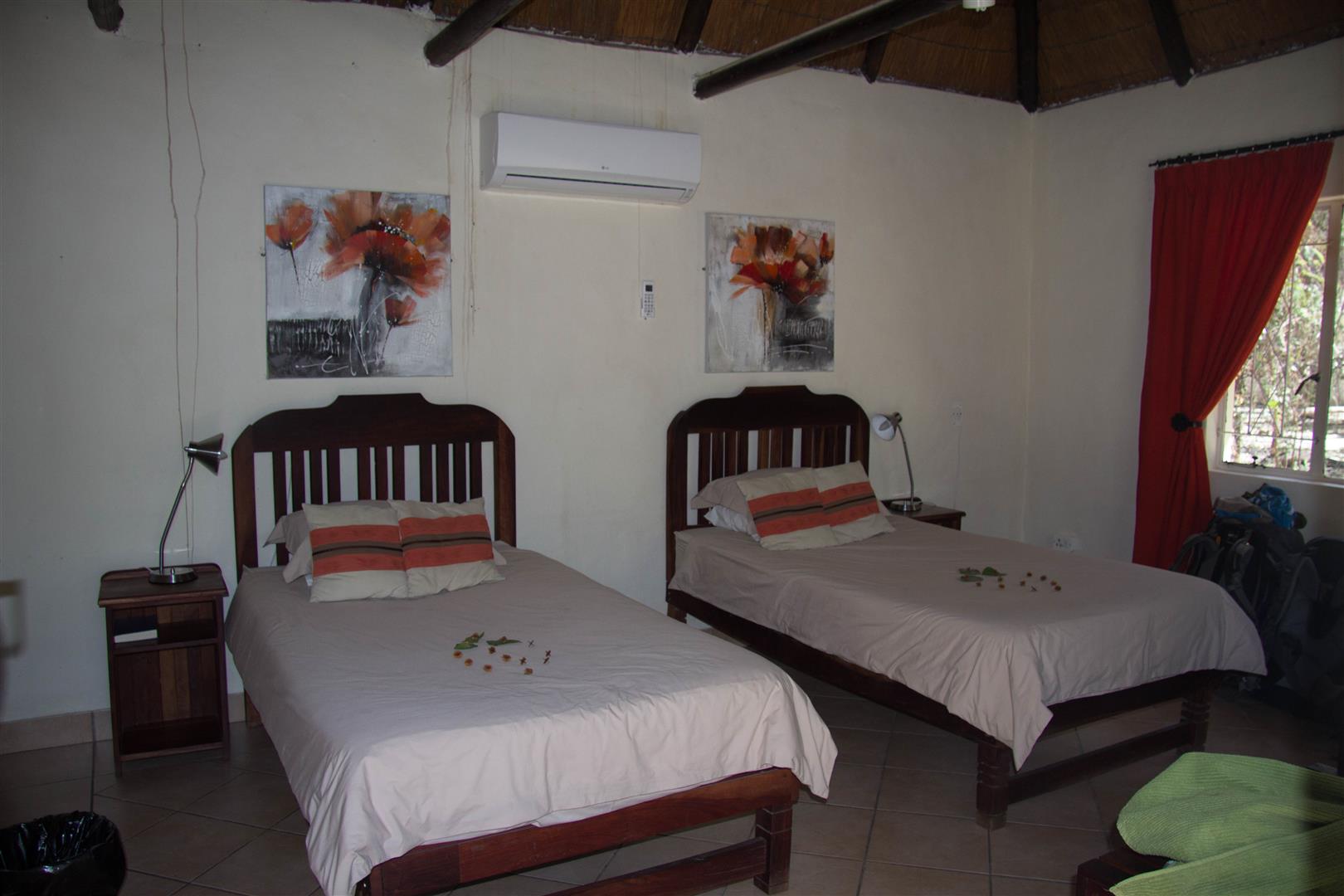
Staying in Cities and Towns
On your journey you have the chance to spend a couple of days or more staying in major cities and towns like Nairobi, Victoria Falls, Swakopmund and Cape Town. And if you’re travelling through Tanzania you will almost certainly go to Zanzibar. While staying in towns and cities your accommodation will change from tent to hostel/hotel and you will get the chance to try the local restaurants and nightlife as well as check out the shopping! It makes for an excellent break from the camp ground. Local restaurants are also an opportunity to try game meat and Namibia and South Africa have some of the best. A plate of BBQ Zebra, Kudu, Springbok and Ostrich in Swakopmund only cost me $10 and it was delish!

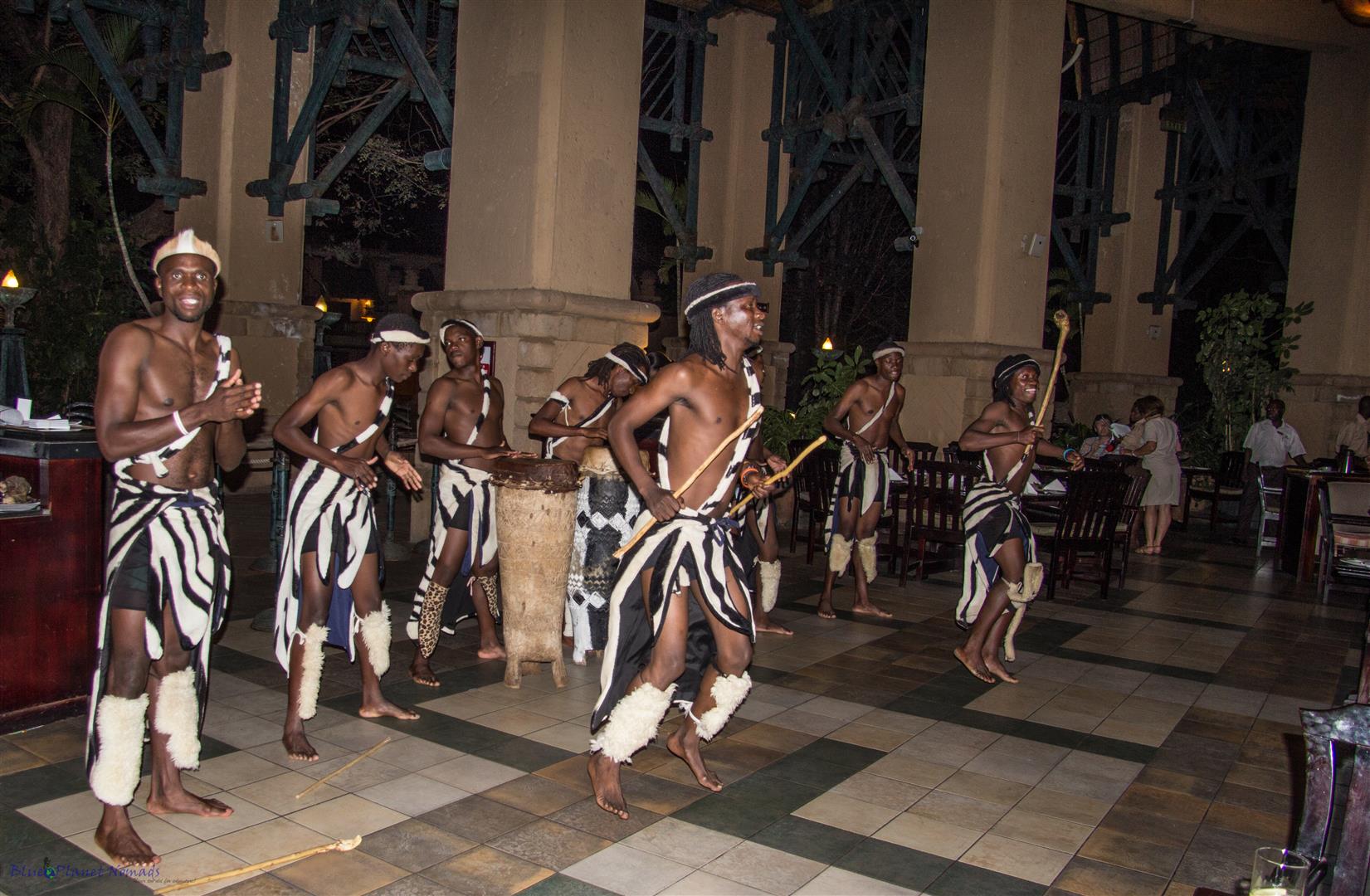

Now down to the Nitty-Gritty
Participation
Overlanding is about group participation and it’s all part of the experience and group bonding. Three crew cannot attend to the needs of up to 26 passengers otherwise they would have no time to relax. So how does it work? When you first join the truck you will be put into a small group of about 4 people and be part of a roster.
Our duty roster went something like this
- Group 1: Helping the cook with chopping and preparation of food
- Group 2: Washing up crew (only dishes used for meal preparation)
- Group 3: Truck clean and Security – This group cleans the truck nightly, sweeping it out and disposing of rubbish. They also make sure that when the truck is not in attendance the windows are shut and doors locked.
- The grunts! These are usually a couple of the strongest guys in the group that help with getting the heavy stuff like tables, chairs and charcoal box/BBQ on and off the truck. They also make sure tents, roll mats and bags are packed properly into the truck. These guys don’t get a day off like us roster bods, one was my husband 🙂
These tasks generally only take about a half hour of your time and you’re rostered onto a different duty each day with one day off. If everyone helps then we all get to sit down and enjoy a beer/wine a lot sooner.
In addition to your duty roster you are expected to do the following yourself:
- Wash your own dishes after meals (only the plate, bowl, cutlery and cups you have used)
- Put up and pull down your own tent and roll mat – When you first join the truck your guide will demonstrate how to erect and pull down your tent.
So what’s on the menu?
Whatever the chef dreams up! Joseph was quite creative and work wonders with the lack of choice available in mainly East African supermarkets. He used a lot of spices to make dishes tasty and interesting and made some very yummy vegetarian dishes. East Africa had the worst bread, plastic cheese and process meats so lunch wasn’t all that inspiring but that’s all he could get. As we ventured into Zambia food quality started to improve as it was more readily available, given it’s shipped in from South Africa.

Our menu went something like this:
- Breakfast: Cereals, toast and jam, bacon and eggs, pancakes
- Lunch: Salad, bread, cheese slices, meats, fruit and sometimes leftovers from the day before. Cordial for drink.
- Dinner: Stews, pasta, stir fries, fish, JFC (Joseph’s Fried Chicken,) vegetable dishes, basically anything he could dream up. As we got further south, we would have more BBQ’s as better meat became available like South African Boerwors and Botswana Beef. Hot meals were always prepared over a hot charcoal fire.
- Tea, coffee and hot chocolate/Milo was available morning and evening.
And if there is a birthday you will get cake!
There really was never any shortage of food and it really was delicious and fresh.


Security
The truck had an on-board safe where all your valuables, cash and passports were kept safe. The security was pretty good around campgrounds as there was always someone around the truck plus many of the campgrounds are behind high locked fences. Once everyone was in bed the truck was locked up.
You were encouraged to only take what you needed to your tent and leave your valuables on the truck. At the end of the day it’s still a shared campground and thieves are around especially of the 4 legged monkey variety!
Charging your gadgets and WiFi
I strongly recommended that you pack a power board as well as adapters required for the countries you are going through as you’re sharing power points with half the camp site! A power board was invaluable and it allowed us to charge our camera batteries, phones, laptop etc off one point (we were the envy of the group!) Some trucks may have power points, ours did but they didn’t work! At the camp grounds there was the option to charge your stuff in the bar area or some camp grounds had designated points but you needed to take turns in guarding or stay close to your stuff.
WiFi was available at some camps, usually around the bar area but most of the time it was desperately slow. The best WiFi we got was at Vic Falls and Cape Town as well as the other major towns/cities you stopped in. Out in the bush, WiFi is non existent, so to get around it buy a local SIM with Data for your phone/tablet.
So what to pack?
First of all, leave the big suitcase at home! Take a backpack or soft bag as there is only so much room in the luggage compartment of the truck to fit your bag and if it’s a full truck then it can be a mighty squeeze.
I won’t list everything but I will make some suggestions:
Sleeping Bag: If you’re travelling over the winter months then make sure it’s warm as nights can be cold especially in Namibia. Our bags were duck down, rated to minus 10, you don’t really need one this warm but at least rated to zero.
Camping pillow and pillow case: It’s not provided so you need to take your own and we could wash the pillow case. We had the self-inflatable “Black Wolf” brand camping pillows.
Tent Light and/or flashlight: We had our little “Black Diamond” tent light which we take hiking, we found it invaluable and provided much better light in the tent than a head torch and you can hang it up and leave it. We had our head torches/flashlights too for the bush camps and late night bathroom visits!
Warm clothes: Fleece, beanie, scarf, long pants – Again when travelling over the winter months, the mornings can be very cold especially on a early morning game drive in an open top safari jeep!
Sarong: A sarong is essential on any trip and you can buy some really nice ones in Zanzibar. It has so many uses. I found it a useful blanket when on the truck, that little extra layer made a difference on those cold mornings.
Quick dry clothes: Makes it far easier for laundry, especially when stops are only for one night.
Washing line and universal sink plug: I used my little travel washing line all the time, I strung it between two of the tent poles, great for drying smalls, swimmers and towels. I don’t have to tell you why a sink plug is handy!
Shoes: Thongs/Flip-Flops/Jandles, Sandals and closed trekking shoes. You will use them all!
Injinji toe socks: Ingenious things which come from the USA. They are designed to fit to the shape of your foot and stop blisters. I wore them all the time with my flip flops to protect me from bugs and dust as well as keeping my tootsies warm 🙂
*They were certainly popular with the rest of our group. If you want to know more then click here
Nail brush: Africa is dry and dusty and if you wear flip-flops and sandals all the time like me then your feet will soon change colour! It took a week to get the dirt out of my feet when I left.
Good first aid kit: You will get bitten, stung, stabbed by Bindi seeds and scratched by the menacing bush (those Acacia thorns are lethal!) so make sure you pack a good first aid kit. Trucks will have one on-board too.
Insect repellent: Yes, mosquitoes are a problem and carry malaria although during the dry winter months there seemed to be noticeably less.
Loose cotton Asian pants: I wore these all the time especially over my shorts on those cold mornings and evenings. They also made good pyjama bottoms. You know the one’s I’m talking about? the baggy cotton pants you see travellers wear in Asia. Well you can buy some nice ones in Zanzibar with cool African prints! Track suit pants work well too.
Sun Cream: If you’re taking Doxycyclin Malaria tablets then you will be slapping on the sun cream. One of the side effects is increased sensitivity to sunlight.
Swimmers and a hat: For pool and beach. There are plenty of swimming opportunities in Zanzibar, campsite swimming pools and you even take a dip in the Delta! Just stay away from the rivers or you will be a Hippo’s lunch 🙂
Buff Headwear: Another favourite item of mine, it can be used in multiple ways to cover your head, face and neck. You can buy them in any outdoor store. For more information click here…
Snorkling Gear/Dive Computer: If you’re going to Zanzibar and Malawi or any coastal area then you are likely to go diving/snorkeling. You don’t have to take them as you can hire but we like our own and we dive and didn’t really take up that much room in our packs.
Dry Bag: I didn’t have one of these but they are a damn good idea if you’re going into the Okavango Delta and want to ensure your precious camera and gadgets are protected in the event your Mokoro canoe might tip up, god forbid!
Set of nice clothes for the Towns and Cities: It’s nice to have at least one set of nice clothes for the towns and cities but most of the time when out bush, on safaris and camp you will wear something you don’t mind getting dirty.
Power Board: I mentioned this further up the post and I can’t say enough about how invaluable having one of these are. When there are only so many power points and you have many gadgets to charge then it make sense to have one.
Small sewing kit: I always carry one travelling and I did end up using it in Africa after snagging my pants on a bush
African Wildlife/Bird guide: Not really essential but I wish I did have one with me as it was good to look up the animals and birds you spotted and you could read up on them. One of our guides had some good books to identify animals but the truck doesn’t always provide a library. I believe the Lonely Planet has a good section on wildlife too.
A damn good CAMERA and BIG LENS: A fancy camera isn’t always in everyone’s budget but if you want those National Geographic shots then it’s worth investing in a good camera with a good zoom (the bigger the ZOOM the better). I love my photography and photographing wildlife and landscapes so I have invested the time and money into my camera gear. I had with me a Canon 600D and the following four lenses:
- Canon 10-22mm – Wide Angle lens for landscapes
- Canon 17-to 85 zoom – My general purpose lens
- Canon 200 f4.0 zoom – This I had with me for the rest of my travels, it’s good lightweight zoom.
- Canon 100-400 zoom – This is my all time favourite for wildlife photography and I used this lens the majority of the time on game drives.
I also had a selection of filters including polarizing for capturing those gorgeous African sunsets.
I also wished we had our little point and shoot but sadly it was stolen in Chile.
A good pair of Binoculars: I had a small pair which really didn’t cut the mustard, next trip I’m going to invest in a good pair of binoculars.
Laptop and portable drive: I was paranoid about losing my photos so I backed them up every night on to my portable drive. I even backed up a second copy to a friend’s drive and did the same for him. Also having a drive I could get copies of other people’s photos. Having my laptop I could look at my photos, watch media and do my blogs. I also had a USB key on hand which was handy for getting those pics from the activity companies otherwise they give you a CD.
A map of Africa: Nice to keep track of where you are going
Cards and games – There is always plenty of opportunity on those long drives to play games with your fellow companions
How much money to take and how easy is it to get?
This question was asked of me more than anything else. The longer the trip the more countries you are likely to pass through and they all have their own currency!
You will need to bring US Cash for the following:
- Kitty
- Visas
- Optional activities that require cash only
We took a selection of US Dollars, UK Pounds and Euros. We had just come from North America and Europe so it was easy to bring this currency. Despite what the websites might say about ATM’s not being readily available we were actually surprised how many there were, every town had at least one and bigger towns many. The only place we found the ATM to be troublesome was Stone Town in Zanzibar they either didn’t work or they had run out of money but our guide took us to one that did work. We used ATM’s where possible and only really started to change money half way through so we didn’t end up with all this spare cash. Money can be easily changed at town banks by showing your passport and there are a few money changers as well. Your guide will point you to the best places with the better rates.
Try bring a card that doesn’t charge you conversion and ATM fees, there are plenty of companies that offer this. We had Citibank cards
We also used our credit card occasionally mainly to pay for some activities.
Money Tip 1
Before you start your trip, research your visa requirements and likely costs and take a look at the dossier and the listed optional activities available in each country. Make a list of what activities you fancy doing and the estimated price and this will help you budget. Some of these activities require payment in US Dollars cash so you need to make sure you have this currency available. One example for us was the three day Serengeti/Ngorongoro Crater trip in Tanzania, this was an optional activity but required payment only in US $500 cash pp. Some activities you can pay in UK pounds and Euros as well.
Money Tip 2
Try not to take out too much local currency only take out what you think you need because you don’t want to be stuck with it when you leave the country and for most part you’re only in a country for a few days. There will be money changing touts stalking you at border crossings and they do offer an opportunity to exchange your leftovers for the new currency but not always at a brilliant rate of exchange. Zambian Kwatcha and Namibian dollars are hard to get rid of. Namibia does also use the South African Rand. Zimbabwe uses US currency so an opportunity to stock up on those dollars, you can also buy from the street touts the old Zimbabwean dollar as souvenirs.
*** Just a note about changing money at the border: Yes there are money changers at the border crossings whether it’s in the form of a shack or touts wondering around trying to get your business. Only really change your leftovers from the previous country where possible, wait until you get to your first town to get the bulk of your cash as the exchange rate is likely to be better.
On the whole though, your trip guide will be able to advise you of the best approach but don’t totally rely on them and if your really stuck for cash then there is always a willing travel companion to lend you a helping hand 🙂 It’s a sharing and caring environment!
Something for the Locals
On your journey you have a chance to meet the locals, whether it’s a village visit, school visit, a trip to the local market and shops or simply camping and lunch stops near their villages. The majority of locals we met spoke English, are friendly and chatty and love a good laugh! In Tanzania and Kenya you have a chance to visit Masai villages and learn about their way of life.
Malawi is a place where you will have a chance to interact with many locals, it’s all about the people in the ‘Warm Heart of Africa’, not the wildlife. Two campgrounds we went to had market stalls outside the gates where you could buy the most magnificent carvings. Malawai is renowned for its beautiful carved chairs and tables and they are not that expensive. One thing we learnt is the locals in Malawai don’t just want cash but batteries, socks and clothes in general. Our guide didn’t tell us about this which annoyed us somewhat. If you want to trade with Malawians then stock up on batteries and socks as they will very much appreciate them, they value these items more than money as theses everyday items are hard to come by. Treats and trinkets will woo the children and they love having their photo taken but be sure to show them their picture on your camera. NEVER give a local MONEY. In village visits like the Maasai for example, you will be encouraged to purchase their wares, don’t feel pressured to do this unless you want to.
The Himba tribe in Namibia were particularly aggressive with their selling and they wanted to charge you for photos even after we had just given them a ton of water. To honest you can buy Himba bracelets cheaper in town! No, they were not my favourite people.


The Namibian Herero tribe however were gentle laid back souls that were famous for their brightly coloured dolls in the images of themselves, I was quite happy to buy something from these lovely ladies.

If in doubt, ask your guide about the locals you will encounter and what’s appropriate, it gives you a chance then to buy stuff at the supermarket.
Shopping for Souvenirs and bartering!
If you love handy crafts, particularly wooden carvings, then Africa is a shoppers mecca. Africans love to barter and they are fun to barter with so be sure to start at half and work your way up.
Best places to shop for wooden carvings:
Africa is renowned for its wooden animal carvings and masks and they are magnificent and if your an Aussie reading this then I can tell you I had no issues bringing it back into Australia as long as it’s free from cracks and holes. The customs official even remarked it was the best wood he had ever seen! The best places I found for wooden carvings are:
- Stone Town in Zanzibar
- Vic Falls markets in Zimbabwe
- Malawi – market stalls near the campgrounds. This is the best place to buy Malawian chairs and tables
- South Africa – I can only speak for Cape Town but it seemed to have collections from all over Africa, Green Market Square in the heart of the city is a good one.
Malaria
Another topic I will only touch on, you will need Malaria tablets, the two most popular are Malarone and Doxycyclin. Malarone is far more expensive than Doxy so we went with Doxy which can have side effects like hallucinations and sensitivity to sunlight. One TIP to keep your costs down is that you are not required to take them once you pass the Etosha Pan in Namibia, Southern Namibia and South Africa are free of Malaria (currently).
Finally…
Well that about rounds it up! I think I have covered most of the important stuff and I hope I have given you some good insight on what life on-board an overland truck is like. I hope I have inspired you now that overlanding really is a lot of fun, a most definitely affordable way of seeing Africa and certainly the most sociable, you will be guaranteed to make some life long friends along the way. All you need is a sense of adventure, some patience and you’re on your way… so get booking, you won’t regret it!
Have you been on an Overland trip? Can you add to my list of tips?

